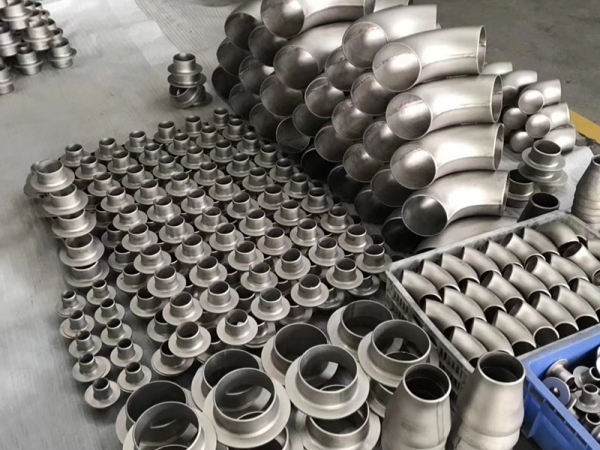Degreasing stainless steel pipe fittings is a critical step in preparing the surfaces for subsequent processes like welding, coating, or any application where cleanliness is essential. Here are common methods for degreasing stainless steel pipe fittings.

Solvent Cleaning:
Use a suitable solvent or degreasing agent to clean the stainless steel surfaces. Common solvents include acetone, isopropyl alcohol, or commercial degreasers. Apply the solvent using a clean cloth, sponge, or brush. Ensure proper ventilation and follow safety precautions when using solvents.
Alkaline Cleaning:
Alkaline cleaners are effective for removing oils, greases, and other organic contaminants. Prepare a solution of alkaline cleaner according to the manufacturer's instructions. Immerse or apply the solution to the stainless steel fittings, and then scrub or rinse thoroughly.
Vapor Degreasing:
Vapor degreasing involves exposing the stainless steel parts to vaporized solvent in a closed system. This method is efficient for removing oils and contaminants from intricate surfaces. It requires specialized equipment but is highly effective and environmentally friendly.
Steam Cleaning:
Steam cleaning utilizes high-pressure steam to remove grease and contaminants from stainless steel surfaces. This method is effective, and the use of steam can minimize the need for chemical degreasers.
Detergent Cleaning:
Mild detergents can be used for degreasing stainless steel. Prepare a solution of water and a mild detergent, and apply it to the fittings. Scrub the surfaces with a non-abrasive brush or sponge and then rinse thoroughly.
Emulsion Cleaners:
Emulsion cleaners are water-based degreasers that can effectively remove oils and greases. These cleaners form an emulsion with the contaminants, making it easier to rinse them away. Follow the manufacturer's instructions for dilution and application.
Ultrasonic Cleaning:
Ultrasonic cleaning uses high-frequency sound waves to create microscopic cavitation bubbles, which help in removing contaminants from the surfaces of stainless steel fittings. This method is effective for intricate parts and areas that are challenging to reach.
Citrus-based Cleaners:
Some citrus-based cleaners are effective and environmentally friendly. These cleaners often contain natural citrus extracts that can break down greases and oils. Follow the product instructions for application and rinsing.
Abrasive Cleaning:
In some cases, abrasive methods like using a non-metallic scouring pad or abrasive cloth may be suitable for removing light grease and surface contaminants. However, be cautious not to scratch or damage the stainless steel surface.
Hot Water Rinse:
After using any cleaning method, finish with a hot water rinse to remove any remaining cleaning agents or contaminants. Thorough drying is essential to prevent water spots.